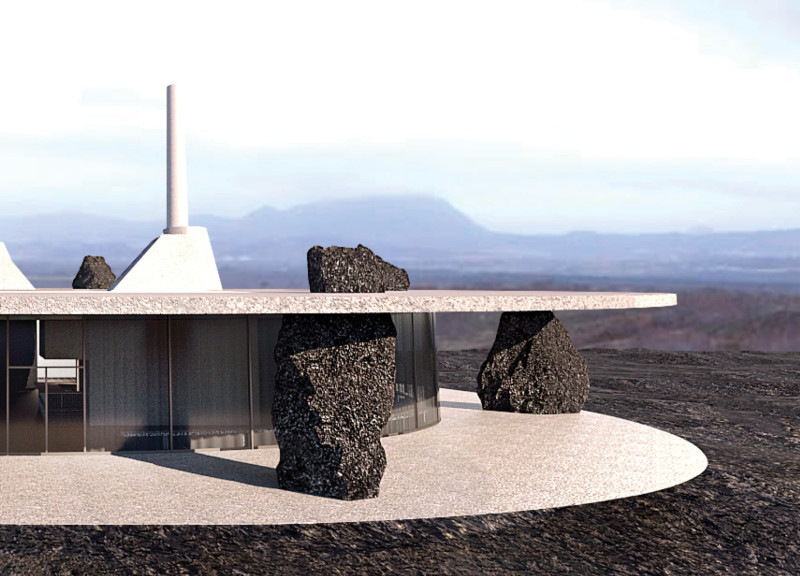5 key facts about this project
Pumice Henge rises amid the black lava fields of Dimmuborgir, Iceland, acting as both a landmark and a part of the natural landscape. The design focuses on a series of boulders that create a semi-enclosed space, which recalls forms found in Icelandic folklore. This setting invites people in without disturbing the environment, emphasizing a harmonious relationship with nature.
Function and Form
The visitor center is designed to promote interaction with the area's unique geological features. By using local materials and natural shapes, the building fits comfortably into its surroundings. It offers shelter and promotes exploration, encouraging visitors to appreciate the landscape while they are there.
Materiality and Sustainability
The center primarily uses volcanic boulders taken from the local area. These materials can be integrated into the design as they are or manipulated to create pools in any spaces left behind. The project also makes use of materials like brick, rammed earth, and gabion walls filled with pumice stones. Together, these choices provide strength and thermal mass while blending visually with the environment.
Interior Design Approach
Inside, the design includes a continuous terrazzo bench made from crushed volcanic rock, which runs along the inner border of the space. This feature invites visitors to sit and connect with the interior, enhancing their experience. The layout encourages people to explore while offering both comfort and a sense of belonging in their environment.
Geological Interpretation
Pumice Henge aims to illustrate important geological processes such as sedimentation, erosion, weathering, crystallization, and metamorphosis. By referencing these natural events in its design, the building naturally fits into the landscape, inviting people to consider the forces that shape the Icelandic terrain over time.
The use of pumice stones in gabion walls reinforces the connection between the structure and the land, anchoring the visitor center securely in its unique geographical context.





















































